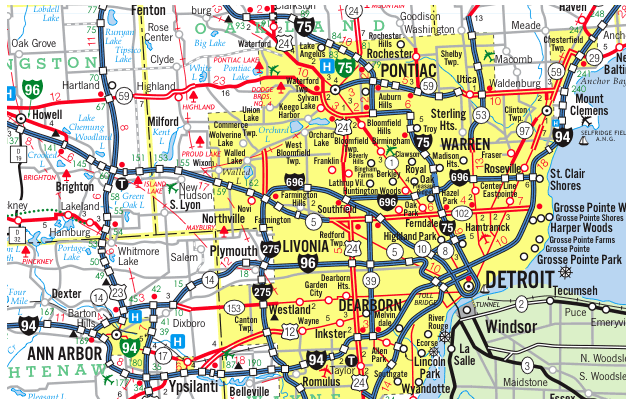Understanding Weep Holes in Masonry Walls: Placement, Purpose, and Michigan Code Requirements
What Are Weep Holes?
Weep holes are small openings located at the bottom of exterior masonry walls, specifically above the flashing, to allow moisture to escape from behind the wall. Despite brick or stone’s durability, moisture intrusion is a significant concern in masonry construction. Water can enter through porous materials, cracks, or mortar joints and, if not properly managed, may lead to mold, deterioration of structural elements, and efflorescence (white salt deposits).
Why Are Weep Holes Important?
The primary function of a weep hole is to:
-
Allow accumulated water within the wall cavity to drain.
-
Promote air circulation behind the wall, facilitating drying.
-
Relieve hydrostatic pressure in cavity wall systems.
-
Prevent damage to structural framing and interior finishes.
Without weep holes, water trapped behind masonry walls can lead to decay of the sheathing, wood framing, and insulation, causing significant structural issues and expensive repairs over time.
Placement of Weep Holes
Weep holes are typically installed:
-
Immediately above the flashing, which is installed at the base of walls, over window and door lintels, above shelf angles, and anywhere water might accumulate within a cavity wall system.
-
At the bottom course of brick veneer walls, where the cavity terminates at the foundation wall or slab.
-
Above openings like windows or doors, where flashing is also used to divert water away from critical junctions.
Key Considerations for Proper Weep Hole Installation:
-
Flashing must slope slightly toward the exterior to guide water toward the weep holes.
-
Weep holes should never be obstructed by mortar droppings or debris; using weep hole tubes or mesh screens helps maintain functionality.
-
The cavity behind the masonry should remain unobstructed to allow water to flow freely down to the flashing level.
Michigan Residential Code Requirements for Weep Holes
In Michigan, the Michigan Residential Code (MRC) aligns closely with the International Residential Code (IRC) when it comes to masonry veneer construction. As of the 2021 Michigan Residential Code, the following requirements are generally applicable:
Section R703.7.6 – Weep Holes:
“Weep holes shall be provided in the outside wythe of masonry walls at a maximum spacing of 33 inches (838 mm) on center. Weep holes shall not be less than 3/16 inch (4.8 mm) in diameter. Weep holes shall be located immediately above the flashing.”
Summary of Code Requirements:
-
Spacing: Maximum of 33 inches on center.
-
Size: Minimum of 3/16 inch diameter (typically 1/4 inch is used for better drainage).
-
Location: Immediately above flashing, which in turn is installed at key transition points in the wall.
-
Materials: Weep holes may be formed by open head joints, plastic or metal tubes, or mesh inserts. Regardless of method, the weep must remain open and unobstructed.
Common Types of Weep Holes Used:
-
Open head joints: Traditional method; every third or fourth vertical mortar joint left open.
-
Weep tubes: Plastic or metal inserts that maintain a clear path through the mortar.
-
Wick weeps: Absorbent rope or mesh materials that draw moisture out of the cavity.
Best Practices for Builders and Inspectors
To ensure code compliance and proper performance:
-
Confirm weep holes are properly spaced and located during construction inspections.
-
Ensure flashing is continuous and terminates properly at wall ends or penetrations.
-
Include mortar netting or mesh at the base of the cavity to keep the path to the weep holes open.
-
Educate contractors and masons on the importance of maintaining clear weep holes.
Conclusion
Weep holes are a small but crucial component of effective masonry wall construction. Located just above the flashing, they serve as the final drainage point to remove trapped water and reduce the risk of moisture-related damage. In Michigan, builders must follow the MRC requirement of installing weep holes every 33 inches on center. Adhering to these standards ensures the long-term durability and performance of masonry structures in Michigan’s challenging climate.




 Our Construction company is Servicing Southeast Michigan, Detroit and the Tri-County area Wyane, Oakland and Macomb;
Our Construction company is Servicing Southeast Michigan, Detroit and the Tri-County area Wyane, Oakland and Macomb;

